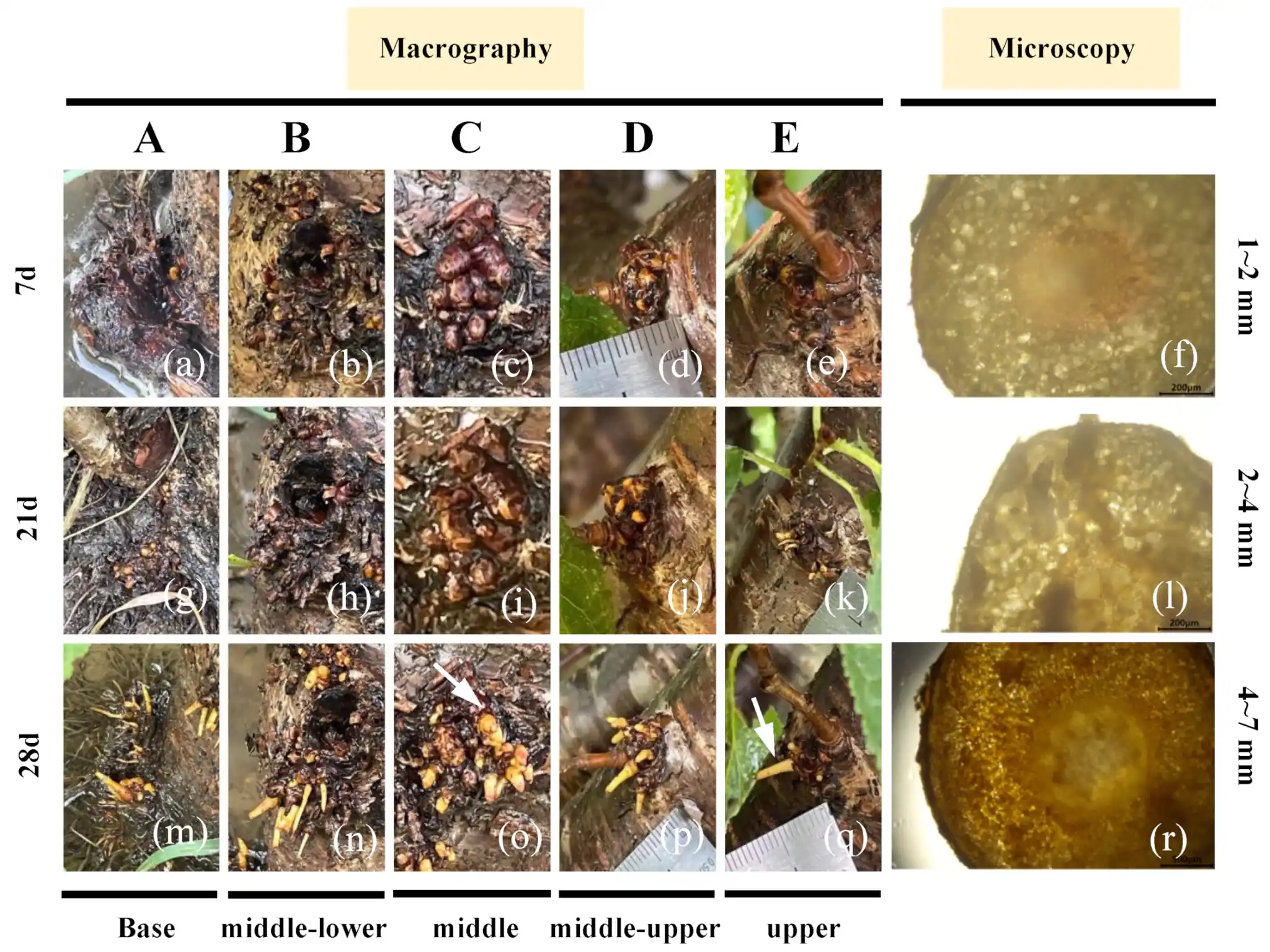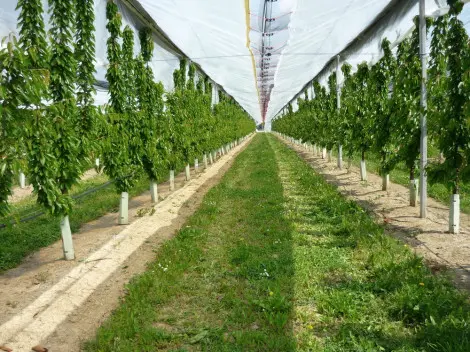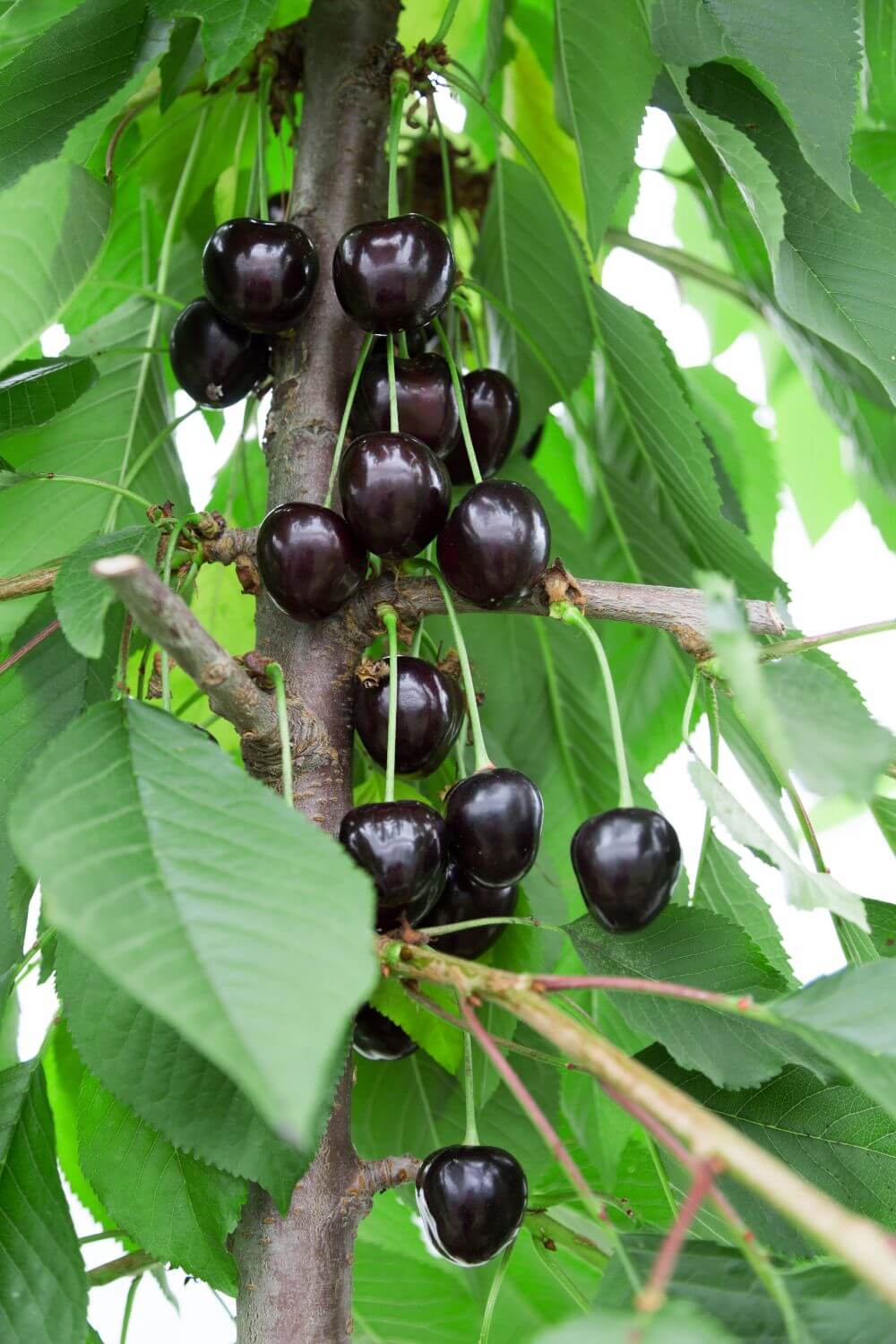Excessive rainfall concentrated over short periods can quickly lead to waterlogging conditions in the field, especially in areas characterized by a rainy season.
When water is unable to drain, waterlogging occurs which, if prolonged, results in crop losses and can even lead to plant death.
Stagnant water can hinder plant growth because the reduced oxygen availability in the soil micropores limits respiration and nutrient uptake.
However, when plants are exposed to environmental stress such as waterlogging, the emission of aerial roots can occur.
Root response and survival mechanisms
These are specialized structures designed to absorb oxygen and distribute it to tissues submerged by water.
This happens when rainfall is particularly intense and prolonged.
Sour cherry (Prunus cerasus) plants often cannot survive extended waterlogging caused by heavy summer rains in northern China, precisely because this species rarely produces aerial roots.
Research conducted so far has shown, however, that certain rootstocks can improve their tolerance.
Prunus genus and potential solutions
Thanks to the large number of plants belonging to the Prunus genus – which includes about 150 different species, some of which produce edible fruits or have economic value as ornamentals – there is great potential for study, development, and application to address this problem.
Researchers at Beijing Forestry University and the Chinese National Botanical Garden investigated the mechanism of aerial root development and its correlation with waterlogging tolerance.
The most interesting result was the discovery of the flowering cherry ‘Gotenba zakura’ (Prunus incisa Thunberg), which is capable of producing aerial roots under prolonged flooding and heavy rainfall.
Subsequently, through the integration of phenotypic observations, physiological assays, and transcriptomic comparisons, a deeper analysis was conducted to investigate the central regulatory network behind aerial root growth.
 Figure 1. Development of aerial roots in different parts of flowering cherry ‘Gotenba Sakura’, observed through macrography and microscopy. Group A–E indicate the base, middle-lower, middle, middle-upper and upper sections. (a) Aerial roots growing at the base part of the trunk for 7 d. (b) Aerial roots growing at the middle-lower part of the trunk for 7 d. (c) Aerial roots growing at the middle part of the trunk for 7 d. (d) Aerial roots growing at the middle-upper part of the trunk for 7 d. (e) Aerial roots growing at the upper part of the trunk for 7 d. (f) Cross section of aerial root measured 1–2 mm. (g) Aerial roots growing at the base part of the trunk for 21 d. (h) Aerial roots growing at the middle-lower part of the trunk for 21 d. (i) Aerial roots growing at the middle part of the trunk for 21 d. (j) Aerial roots growing at the middle-upper part of the trunk for 21 d. (k) Aerial roots growing at the upper part of the trunk for 21 d. (l) Cross section of aerial root measured 2–4 mm. (m) Aerial roots growing at the base part of the trunk for 28 d. (n) Aerial roots growing at the middle-lower part of the trunk for 28 d. (o) Aerial roots growing at the middle part of the trunk for 28 d. (p) Aerial roots growing at the middle-upper part of the trunk for 28d. (q) Aerial roots growing at the upper part of the trunk for 28 d. (r) Cross section of aerial root measured 4–6 mm.
Figure 1. Development of aerial roots in different parts of flowering cherry ‘Gotenba Sakura’, observed through macrography and microscopy. Group A–E indicate the base, middle-lower, middle, middle-upper and upper sections. (a) Aerial roots growing at the base part of the trunk for 7 d. (b) Aerial roots growing at the middle-lower part of the trunk for 7 d. (c) Aerial roots growing at the middle part of the trunk for 7 d. (d) Aerial roots growing at the middle-upper part of the trunk for 7 d. (e) Aerial roots growing at the upper part of the trunk for 7 d. (f) Cross section of aerial root measured 1–2 mm. (g) Aerial roots growing at the base part of the trunk for 21 d. (h) Aerial roots growing at the middle-lower part of the trunk for 21 d. (i) Aerial roots growing at the middle part of the trunk for 21 d. (j) Aerial roots growing at the middle-upper part of the trunk for 21 d. (k) Aerial roots growing at the upper part of the trunk for 21 d. (l) Cross section of aerial root measured 2–4 mm. (m) Aerial roots growing at the base part of the trunk for 28 d. (n) Aerial roots growing at the middle-lower part of the trunk for 28 d. (o) Aerial roots growing at the middle part of the trunk for 28 d. (p) Aerial roots growing at the middle-upper part of the trunk for 28d. (q) Aerial roots growing at the upper part of the trunk for 28 d. (r) Cross section of aerial root measured 4–6 mm.
Biochemical responses and tolerance
Based on the results, researchers assert that waterlogging is essential to initiate the aerial root generation process, and that the degradation of reactive oxygen species (ROS) plays a crucial role in waterlogging tolerance.
This aligns with the widely accepted notion that signals triggered by prolonged flooding lead to the accumulation of abscisic acid (ABA), which activates an adaptive response in plants.
Hormone measurements in the study further support this mechanism, revealing a strong connection between ABA and ROS accumulation.
The latter play a dual role in plant stress responses.
Adaptation and cultivation implications
Under normal physiological homeostasis, ROS are detoxified through various antioxidant defense mechanisms.
However, excessive ROS levels can overwhelm these defenses, causing oxidative stress, cellular damage, and even cell death.
To prevent such damage, plants initiate the formation of aerial roots, which help them adapt and survive.
In light of these findings, this species appears particularly promising for use as a rootstock for cherries and sour cherries, potentially extending their cultivation range also to less favorable areas.
Source: Feng, X.; Lyu, T.; Lyu, Y. Aerial Root Growth and Development Mechanism of Flowering Cherry ‘Gotenba zakura’ (Prunus incisa) and Its Relationship with Waterlogging Tolerance. Horticulturae2024, 10, 991. https://doi.org/10.3390/horticulturae10090991
Figure sourcea: Feng et al., 2024
Melissa Venturi
University of Bologna (ITA)
Cherry Times - All rights reserved












